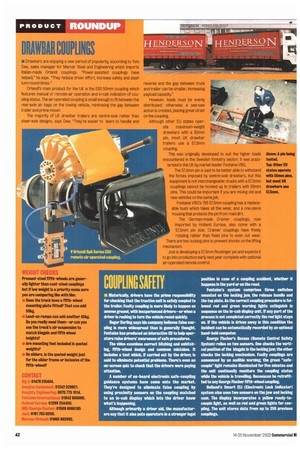[till] II SAFETY
Page 42

If you've noticed an error in this article please click here to report it so we can fix it.
• HistoricaRy, drivers have the prime responsibility for checking that the tractive unit is safely coupled to the trailer. Faulty coupling is more likely to happen on uneven ground, with inexperienced drivers—or when a driver is rushing to turn the vehicle round quickly.
Roger Darling says his company believes false coupling Is more widespread than Is generally thought. Fontaine has produced an interactive CD to help operators raise drivers' awareness of safe procedures.
The video examines correct hitching and unhitching, fifth-wheel design and common mistakes. It Includes a test which, if carried out by the driver, is said to eliminate potential problems. There's even an on-screen quiz to check that the drivers were paying attention.
A number of on-board electronic safe-coupling guidance systems have come onto the market. They're designed to eliminate false coupling by using proximity sensors on the coupling matched to an in-cab display which lets the driver know what's happening.
Although primarily a driver aid, the manufacturers say that it also puts operators hi a stronger legal position in case of a coupling accident, whether it happens in the yard or on the road.
Fontaine's system comprises three switches mounted on the lucking jaw, the release handle and the top plate. As the correct coupling procedure is followed red and green warning lights extinguish in sequence on the in-cab display unit. If any part of the process is not completed correctly the red light stays on. If the vehicle is driven away in this condition the Incident can be automatically recorded by an optional hand-held computer.
George Fischer's Recess (Remote Control Safety System) relies on two sensors. One checks the vertical position of the kingpin in the locking jaw; the other checks the locking mechanism. Faulty couplings are announced by an audible warning; the green "safecouple" light remains illuminated for five minutes and the unit continually monitors the coupling status while the vehicle is travelling. Recosscan be retrofitted to any George Fischer fifth-wheel coupling.
Holland's Smart ELI (Electronic Lock indicator) system also uses two sensors on the jaw and locking cam. The display incorporates a yellow ready-tocouple light, as well as red and green lights for coupling. The unit stores data from up to 250 previous couplings.




































































































































































